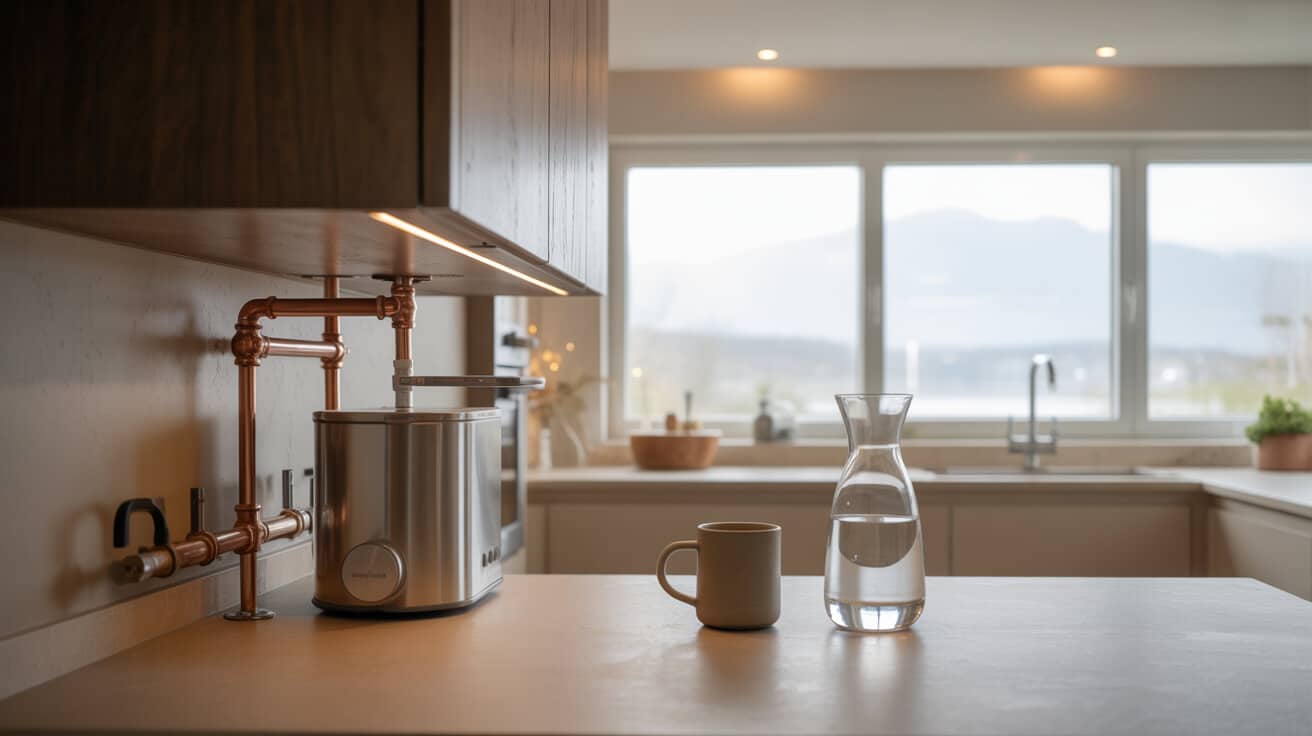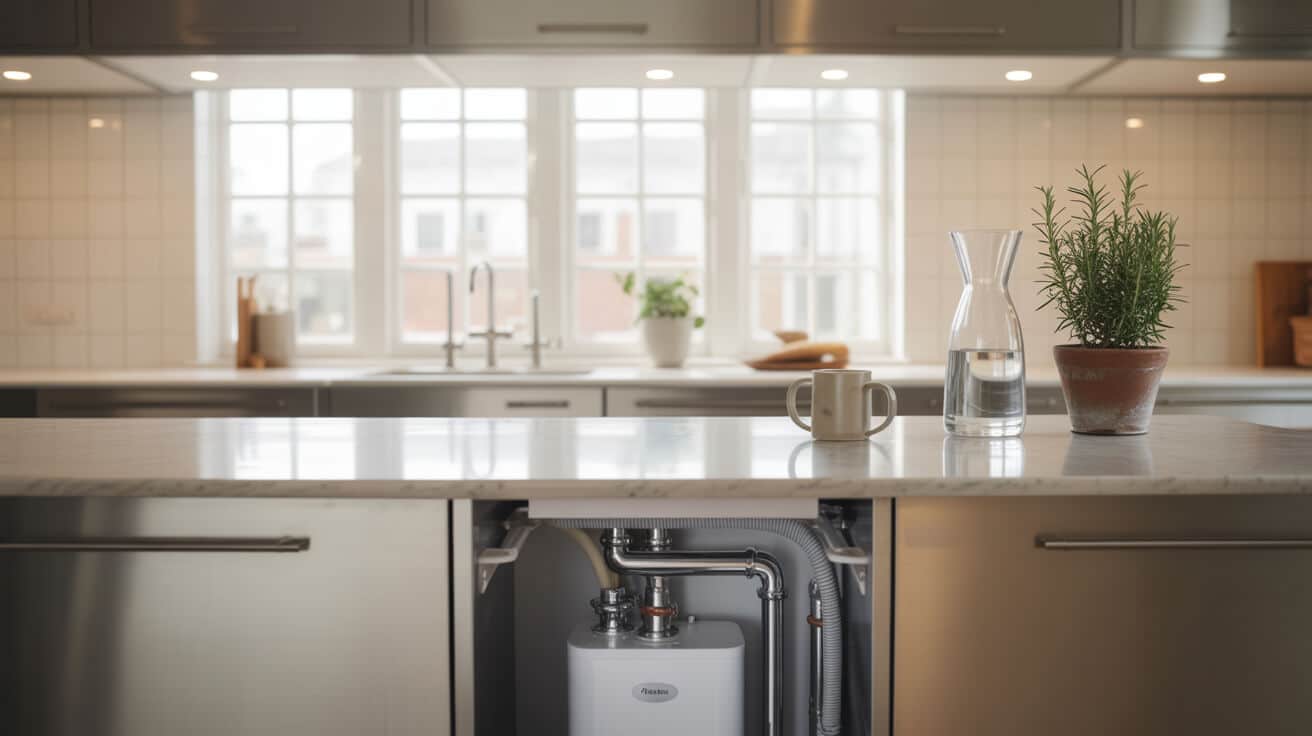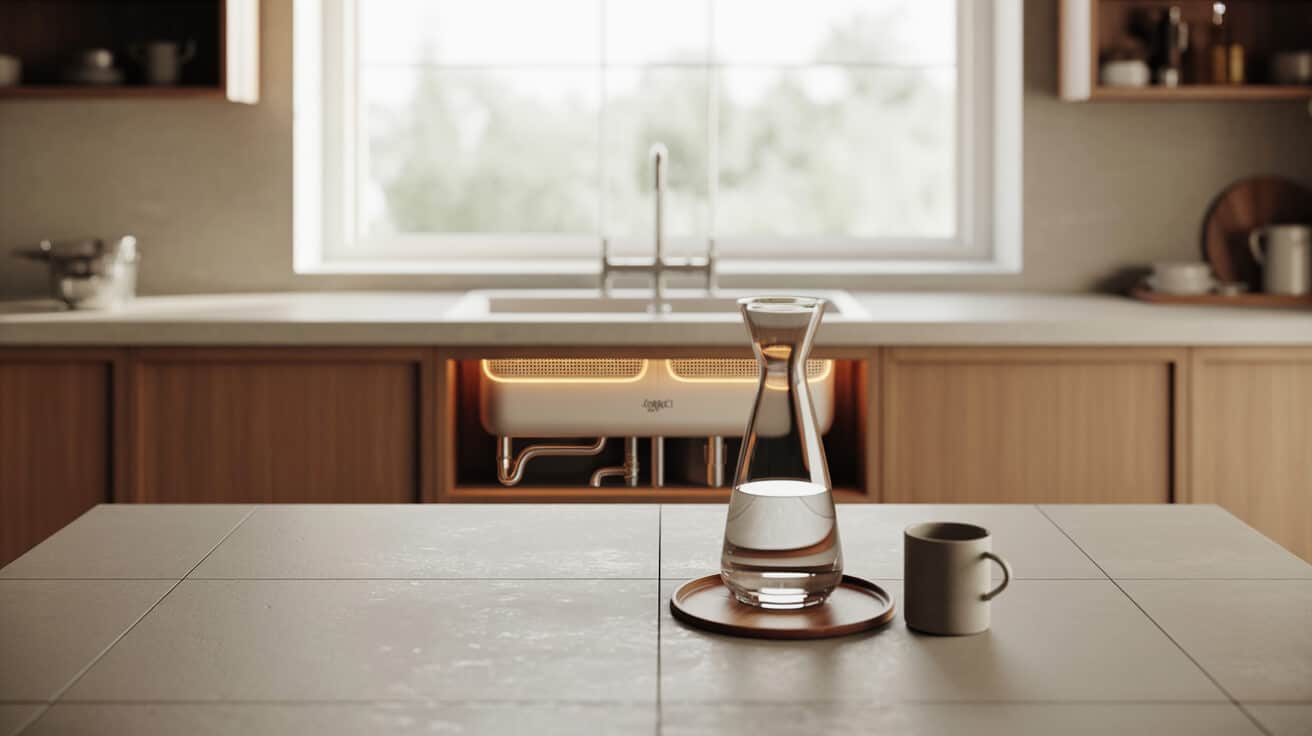The introduction of water softening technology into a building redefines its interaction with one of life’s essential utilities, influencing both unseen mechanisms and everyday experiences. Scale and mineral deposits, while often overlooked until failure or visible damage, impact every junction, valve, and appliance in your property. Plumbers 4U delivers services designed to ensure that your company, household, or facility operates free from the recurring frustration of scale, rising energy bills, or unexpected equipment outages.
The rationale for water softening installation transcends cosmetic cleanliness. By modifying the mineral chemistry of supply water, your systems guard against the insidious buildup that silently shortens lifespans of heating elements, cylinders, and invaluable assets. Professional fitting is not merely a mechanical process: it’s a legal and technical assurance, marrying the science of water chemistry with the exacting requirements of modern plumbing standards. In rental and commercial sectors, correct setup is inseparable from compliance, risk avoidance, and the enduring reputation of your organisation.
Efficiency and system longevity are quietly woven through every functional area, from heating zones and kitchens to plant rooms and guest facilities. Landlords and facilities managers alike recognise water softener installation as an intelligent investment—not just for regulatory needs, but as a proactive agent of operational reliability and reduced capital loss.
Etymology or Name Origin
The phrase “water softener” crystallised in English technical vernacular during the early to mid-1900s, accompanying the commercialization of chemical water treatment processes. “Soft” water, contextually, describes supply with low concentrations of hardness-inducing minerals such as calcium and magnesium—qualities that reduce scaling and improve lathering properties in soaps.
The term’s global and industry synonyms—“softening unit,” “resin conditioner,” “decalcifying system”—reflect parallel traditions in Europe, North America, and the regulatory language of plumbing codes. Over time, as mineral-specific resin beds and automated salt-based cycles superseded basic filtration and chemical additives, “water softener” has become the dominant convention in installer manuals, regulatory documentation, and brand literature.
Overview / Context
Hard water is an inherently geographic problem, dictated by local geology, water sourcing, and municipal treatment infrastructure. Typical symptoms include rapid formation of limescale within pipe walls, reduced operational efficiency of water heaters and boilers, clouding or marking on sanitaryware and glass, and the premature failure of washing machines, dishwashers, and kettles.
Your property’s risk profile is shaped by both architectural age—older plumbing being especially vulnerable—and water supply source. The necessity of integrating water softeners grew as property owners and public sector managers began measuring true cost across heating bills, service calls, and system downtime. Unchecked, hardness impacts not only technical efficiency but also emotional variables—frustration at repeated breakdowns, dissatisfaction from tenants or clients, and the invisible erosion of asset value.
Institutions, landlords, and facilities professionals increasingly view water softener installation as a shield woven into resilience strategy, compliance frameworks, and future-proofing of property portfolios.
History
Origins
Confronting water’s “hardness” predates the industrial revolution, with early approaches hinging on boiling or use of plant-based ash. Such efforts yielded limited, localised reprieve and rarely extended to systemic solutions.
Industrial Emergence
The study of ion exchange and zeolite minerals in the late 19th century marked the first scalable leap, giving rise to municipal-scale resin tanks and brine regeneration cycles. By the early 20th century, first-generation conditioning plants found application in hotels, factories, and healthcare settings, protecting high-value heating investment and reducing infrastructure maintenance.
Contemporary Evolution
The shift from municipal to domestic deployment was triggered by the invention of compact, synthetic resin beds—regenerable by salt flush and suitable for under-sink or plant room use. Mechanical time-clock models gave way to digital, metered units programmed for local water composition and demand. Today’s market includes systems with microprocessor controls, remote diagnostics, and app-based configuration support. Regulations, notably the Water Supply (Water Fittings) Regulations 1999 and corresponding WRAS standards, instilled legal frameworks for safe and effective installation, elevating the installer’s technical and ethical role.

Concept / Description
At its core, a water softener substitutes sodium or potassium ions for calcium and magnesium ions found in hard supply. The system comprises several interlocking components, each engineered for performance and compliance.
Key Components
- Resin Vessel: Houses ion exchange beads, sized and rated for anticipated flow.
- Brine Tank: Supplies regeneration solution (sodium or potassium chloride) used to renew resin exchange capacity.
- Control Head/Valve: Directs flow, triggers regeneration (via time, metre, or demand logic), handles bypass cycles, and provides status indication.
- Bypass Valve Assembly: Facilitates unit isolation, maintenance, and ensures your drinking water tap can remain untreated if desired.
- Inlet/Outlet, Drainage: Securely connects to supply and waste, with anti-backflow protection.
System Layouts
- Point-of-Entry: Treats all supply entering a property for comprehensive coverage.
- Point-of-Use: Selectively conditions supply for sensitive assets (e.g., commercial dishwashers, healthcare facilities).
- Hybrid/Modular: Allows for fine-grained control over which appliances, outlets, or property zones receive softened supply.
Functionality / Purpose / Applications
Water softening delivers measurable benefits across settings:
- Technical Efficiency: Reduces formation of scale, minimising thermal resistance and energy waste in hot water systems.
- Equipment Longevity: Prolongs lifespan of boilers, cylinders, heating zones, pumps, and white goods.
- Operational Reliability: Decreases incidence and cost of emergency breakdowns or warranty-voiding service calls.
- Aesthetic Value: Restores clarity to fixtures, shower screens, and glassware.
Diverse Applications
- Domestic: Guarantees stable asset performance, enhances comfort, and addresses persistent symptoms.
- Rental and Managed Properties: Supports regulatory mandates, scheduled maintenance, and smooth tenant handover.
- Commercial and Institutional: Critical for kitchens, laundries, hotels, and healthcare, where water quality affects process control, hygiene, and overall user satisfaction.
Classifications / Types / Variants
Water softeners exhibit pronounced diversity in design, operational mode, and fitting intent.
Comparative Table of System Types
| Type | Core Process | Salt Use | Regeneration Logic | Typical Use Cases |
|---|---|---|---|---|
| Ion Exchange (Single) | Ion-selective resin | Yes | Timer or metre | Homes, small offices |
| Ion Exchange (Duplex) | Twin resin beds | Yes | Alternating, continuous | Hotels, institutional properties |
| Salt-Free/Physical | Template, magnetic | No | N/A | Scale reduction (limited); eco installations |
| Electromagnetic/Electronic | Field interference | No | N/A | Claims for minor scale reduction – variable |
Additional Features
- Control: Timeclock, metered (demand-initiated), or digital (programmable, app-configured)
- Footprint: Compact models for flats; high-throughput for commercial plant rooms
- Regeneration Efficiency: Water/stress-saving features; smart brining or proportional regeneration cycles
Systems / Tools / Methodologies
Installation demands a balance of standardised and bespoke processes, reflecting site-specific complexity.
Essential Tools
- Pipe cutters, adjustable spanners, compression/PUSH-FIT fittings:
- Hardness metres: For supply baseline and post-instal verification
- Non-return (check) valves, air gap kits: regulatory compliance
- Drainage connection tools, brine tank accessories:
- Manufacturer programming devices, commissioning sheets, documentation templates:
Installation and Commissioning Steps
- Site survey: Validate supply hardness, flow, pressure, and waste options
- Pre-fit isolation: Main supply shutoff, system depressurization
- Pipe measurement and adaptation: Seamless fitting into supply line
- Bypass assembly: Secures future maintenance and compliance pathways
- Physical unit installation: Positioning for access and frost/salt load concerns
- Brine tank fill and connection: Ensuring reliable regeneration capability
- Initial cycle and flush: Remove any loose resin, sanitise with manufacturer-specified solutions
- Quality assurance: Test sample from nearest outlet; validate configuration
- Documentation and user instruction: Handover includes maintenance calendar, troubleshooting, and direct support contact
Plumbers 4U places meticulous emphasis on compliance and customer-oriented fit, ensuring each project meets both legal and operational excellence.

Stakeholders / Entities Involved
Professional Installers
Plumbing and heating engineers conduct the technical fit-out, system programming, and issue formal commissioning records critical for audit and warranty.
Owners and Family Users
- Homeowners make choices informed by long-term cost/value, comfort, and risk tolerance.
- Tenants and families benefit from silent comfort improvements and accessible troubleshooting support.
Property and Facilities Managers
- Schedule and log compliance, document maintenance and coordinate with high-usage tenants.
- Adding softeners to service contracts positions your company for proactive asset care.
Landlords & Letting Agents
- Hold responsibility for providing compliant, healthy accommodation.
- Rely on proven partners (like Plumbers 4U) for documentation and responsive, scheduled maintenance.
Manufacturers and Brands
- Develop and test hardware for durability, water efficiency, and regulatory compliance.
- Furnish technical support—your company’s access to this expertise streamlines solutions to rare challenges.
Regulatory Authorities
- Mandate technical standards and may require notifications or scheduled inspections for both initial installation and change of use.
Legal / Regulatory / Ethical Considerations
The regulatory environment represents more than red tape; it is the structural backbone for safeguarding your water supply, your fixtures, and your end users.
- WRAS-Certified Models: Only certified devices, fittings, and materials can be integrated with potable supply lines.
- Non-Return Valves and Air Gaps: Required to prevent backflow and cross-contamination, especially where untreated water is mandated for drinking purposes.
- Water Supply (Water Fittings) Regulations 1999: Mandate standards for appliance connection, backflow protection, and contractor credentials.
- Part G & Part L of Building Regulations: Place requirements on hygiene and energy performance related to water processing systems.
- Landlord Obligations: Maintenance logs, periodic audits, and emergency documentation must be readily available.
Ethical Practice
- Full customer disclosure regarding operational impacts, salt discharge, and the limitations of non-salt alternatives.
- Transparent documentation of all steps, maintenance recommendations, and support pathways.
- Commitment to environmental stewardship, aligning your organisation’s actions with local discharge regulations and public health policies.
Performance Metrics / Data / Measurements
Accurate measurement underpins both satisfaction and compliance.
Core Metrics
- Liquid Hardness (°dH, ppm): Baseline and treated measurements, logged for performance certification
- Pressure and Flow Rate: Document any changes post-fit, ensure within manufacturer and code-compliant tolerances
- Salt Consumption: Monitored to gauge regeneration efficiency and operational economy
- Service Life of Resin/Valve: Correlated with installation environment, salt type, and water profile
- Regeneration Cycle Count: Matched to user profile; over/under-cycling signals maintenance needs
Service and Warranty Data
- Commissioning records: Enforced as a warranty foundation, and for subsequent ownership transfer
- Annual check-up log: Required in regulated and high-usage environments
Challenges / Barriers / Limitations
Professional complexity is often hidden behind user simplicity.
Operational Bottlenecks
- Poor system sizing or incorrect flow ratings provoke either inefficiencies or inadequate softening.
- Missed bypass fitting results in future servicing hardship, risking supply disruption or contamination.
Technical Failures
- Salt bridging, channelling, or bypass misconfiguration: Physically block regeneration, requiring specialised intervention.
- Resin fouling by iron, chlorine, or bacterial build-up: Shortens component lifespan and challenges off-the-shelf maintenance routines.
Social / Economic and Policy Factors
- Cost hurdles: Both hardware and installation involve upfront capital outlay, often justified by multi-year savings.
- Environmental objections: Local or national restrictions on sodium discharge can limit solution types or encourage low-salt alternatives.
- Behavioural gap: Users may forget salt replenishment, misunderstand bypass valve setting, or ignore system warning indicators.
Impact / Influence / Legacy
The transformative power of a correctly installed water softening system is often best measured by absence—no more sudden heater breakdowns, no wasted hours cleaning (or replacing) fixtures, and no same-fault return visits by your technician.
Long-Term Consequences
- Equipment works optimally and lasts to its design horizon; manufacturers honour warranties, insurers lower risk ratings.
- Asset managers enjoy stable maintenance schedules, reduced budgeting volatility, and enhanced tenant satisfaction.
- Regulatory authorities reference water softener compliance as a model for distributed property risk management.
The legacy is as much about trust in invisible infrastructure as it is about visible improvement. For property and facility owners, water softening is a silent partner in health, cost reduction, and daily comfort.
Future directions, cultural relevance, and design discourse
The future of water softening installation is distinguished by cross-currents of regulatory scrutiny, eco-innovation, and consumer desire for invisibly integrated comfort. Trends indicate the rise of low- or zero-salt systems and designers are driven to minimise footprint while increasing capacity and reliability.
Cultural perceptions shift as system health and efficiency data become shared amongst property managers, owners, and renters. Design conversations extend to the visibility and aesthetic integration of equipment—no longer relegated to utility spaces, but harmonised with contemporary interiors.
Regulation continues to push the frontier, with anticipation growing around environmental impact, permissible discharge, and performance benchmarks demanding robust, creative solutions from both product developers and installation professionals. As your company invests in next-generation water quality, legacy is created not just in the string of compliant installations or warranties honoured, but in the lived improvement of every building touched.

